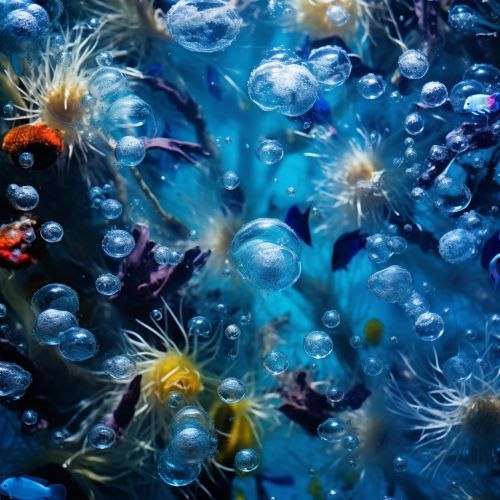Macroplankton
Overview
Macroplankton are a type of plankton that are larger than 2mm in size. They are a crucial part of the marine ecosystem, serving as a primary food source for larger marine animals. Macroplankton are typically found in the upper layers of the ocean, where sunlight is abundant, allowing for photosynthesis to occur in phytoplankton.

Classification
Macroplankton can be classified into two main categories: phytoplankton and zooplankton. Phytoplankton are plant-like organisms that produce their own food through photosynthesis, while zooplankton are animal-like organisms that feed on phytoplankton and other zooplankton.
Phytoplankton
Phytoplankton are the primary producers in the ocean, converting sunlight into chemical energy through photosynthesis. They form the base of the marine food web and are consumed by zooplankton, fish, and other marine animals. Phytoplankton are responsible for producing more than half of the world's oxygen.
Zooplankton
Zooplankton are heterotrophic planktonic animals that range from tiny protozoans to large jellyfish. They feed on phytoplankton and smaller zooplankton, and in turn, are consumed by larger marine animals. Zooplankton play a crucial role in the marine food web, transferring energy from the primary producers to the higher trophic levels.
Distribution and Habitat
Macroplankton are found throughout the world's oceans, from the surface to the deep sea. Their distribution is influenced by various factors such as light availability, water temperature, salinity, and nutrient availability. Macroplankton are most abundant in the euphotic zone, the uppermost layer of the ocean where sunlight can penetrate, allowing photosynthesis to occur.
Role in the Ecosystem
Macroplankton play a vital role in the marine ecosystem. They form the base of the food web, serving as a primary food source for larger marine animals. They also play a crucial role in the carbon cycle. Through photosynthesis, phytoplankton absorb carbon dioxide from the atmosphere and convert it into organic matter. When they die, they sink to the ocean floor, effectively sequestering carbon in the deep sea.
Threats and Conservation
Macroplankton face several threats, including climate change, ocean acidification, and overfishing. Changes in ocean temperature and acidity can affect their distribution and abundance, while overfishing can disrupt the marine food web, leading to a decline in macroplankton populations. Conservation efforts are focused on reducing greenhouse gas emissions, protecting marine habitats, and implementing sustainable fishing practices.
